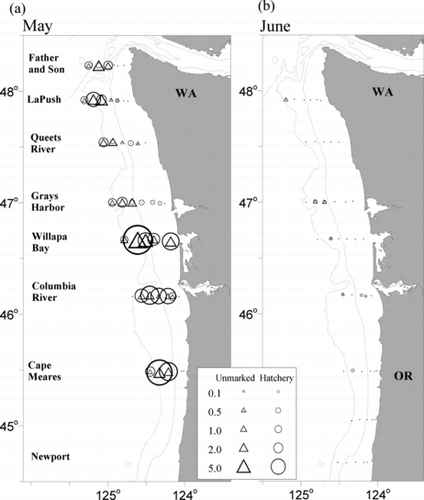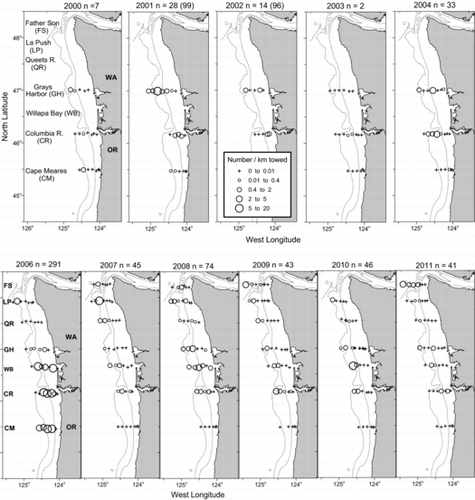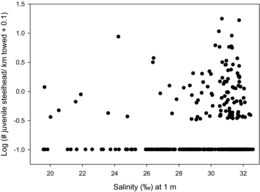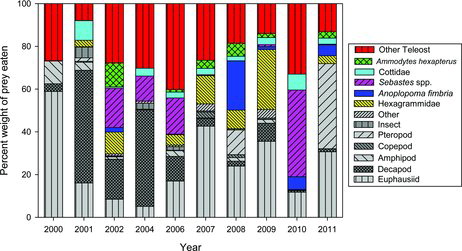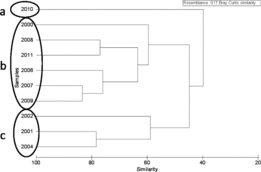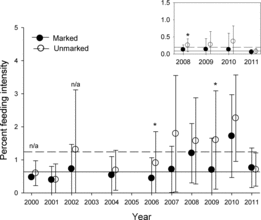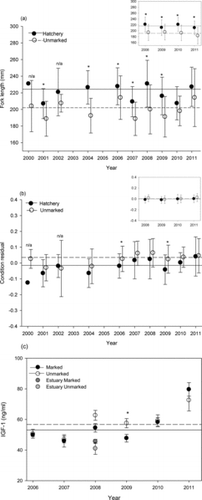Figures & data
Table 1 Numbers of juvenile steelhead that were sampled in marine waters off the coasts of Oregon and Washington during annual May surveys. Counts of steelhead were adjusted by the annual rate of hatchery marking to estimate the numbers of unmarked fish and hatchery fish.
Table 2 Release and recovery information for coded-wire-tagged or PIT-tagged steelhead that were caught in marine waters off the coasts of Washington and Oregon. The mid-Columbia subbasin encompasses locations below the confluence of the Columbia and Snake rivers, including the Willamette and Umatilla rivers; the upper Columbia subbasin includes all tributaries above the confluence of the Columbia and Snake rivers. The Snake River basin includes all tributaries to the Snake River.
Table 3 Size, growth, and residence parameters calculated based on otolith structural and elemental data from 47 juvenile steelhead collected off the coasts of Washington and Oregon. Hatchery fish had adipose fin clips and/or coded wire tags.
Table 4 Biological characteristics of ocean-caught juvenile steelhead in relation to capture distance from shore averaged in 8-km blocks. For each biological characteristic (FL, condition index, etc.), we tested for differences between 8-km blocks; for a given variable, values without a letter in common were significantly different (ANOVA: P < 0.05). No significant among-block differences in FL or insulin-like growth factor 1 (IGF-1) were found for unmarked fish.
